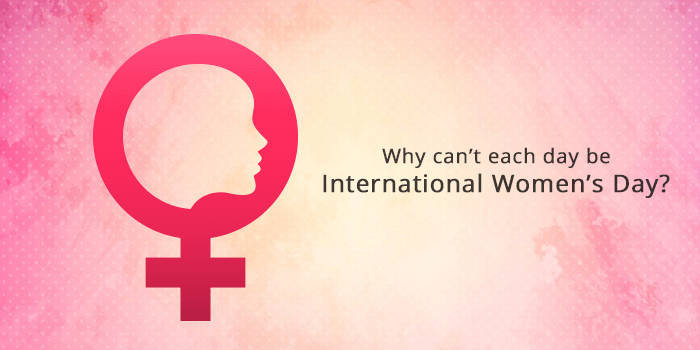Is there a need for home healthcare in India?
And why is the fight for women’s rights still necessary?
Observed since the early 1900s, International Women’s Day (IWD) brings together people, governments, organisations, corporations and charities to support women’s rights and gender equality. A worldwide event, it celebrates women’s achievements – across the spectrum of human activities.
The theme for this year is #PressforProgress, an acknowledgement of the growing global movement for advocacy, activism and support surrounding gender parity and sexism.
The original aim of establishing and celebrating International Women’s Day was to achieve full gender equality for women around the world. This has still not been realised. A pay gap between the genders still exists across the globe and women are still not present in equal numbers, or given equal status, in business, politics or society. Globally, statistics show, that in areas of women’s education, health and violent behaviour, women are still worse off than men.
On International Women’s Day, women across the world come together, literally and metaphorically, to force the world to recognise these glaring inequalities – while also celebrating the achievements of those women who have overcome these barriers thrown up by the world they live in.
A brief look at the status of women today
A 2017 report by the World Economic Forum states that it could still take another 100 years (or even until 2186) before the global gender equality gap between men and women disappears entirely. Consider the following:
In 2017, women effectively worked "for free" for 51 days of the year because of the gender pay gap.
Women are paid less than half what men are paid at some of Britain's major companies, according to recent gender pay gap figures. This is true of the rest of the developed world, and much worse in the undeveloped areas of the globe.
In 2017, women's rights (or lack of them) dominated the news, with a global reckoning on sexual misconduct rippling through industries spanning media, entertainment, sport, politics and corporations.
Following the flood of allegations against Harvey Weinstein, just one of the many prominent men who abused their positions of power, the #MeToo movement gave a voice to women on the abuse and harassment they suffered, and still do, in film, fashion, music, politics and art. A highly visible example was BBC journalist Carrie Gracie publicly resigning as China editor over unequal pay.
TIME magazine named the women speaking out against sexual and gender injustice its Person of the Year in December 2017, naming the collective winner 'The Silence Breakers'.
The very vocal fight for women's rights has only increased in 2018. Actresses have donated money and worn black at awards ceremonies in support of #TimesUp.
1918 vs 2018: A few things that have changed in the last 100 years
If we look back at the early 20th century, we see that:
Women didn’t have the vote; in some countries this was true till the middle of the 20th century
Women couldn’t apply for a credit card or loan in their own name
Working in the legal profession and civil service was not allowed
Women couldn’t inherit or bequeath property on the same terms as men
Couldn’t claim equal pay for doing the same work as men; this is still true in the 21st century
Couldn’t prosecute a spouse for rape; still true in many areas of the world
The suffragette movement, started in 1918, was the start of the fight for women’s rights in the UK. 2018 marks 100 years since (some) women were given the right to vote in the UK: the tabling in Parliament of the People’s Representation Act on February 6, 1918, permitted women over 30, who owned a house, the right to vote; but it would take another decade for women over 21 in Britain to be given the same voting rights as men.
The 1918 act, supported by suffrage pioneer Millicent Fawcett and suffragette leaders the Pankhursts, was a pivotal moment in the fight for women’s rights and helped lay the foundations for greater political, social and economic equality.
While there is still a great deal progress to be made, the successes and evolution of the feminist movement, plus the sea-change in attitudes towards women’s rights over the past century, will be celebrated with commemorative events around the world in 2018.
Where do women stand today?
In 2017, women’s marches and protests were attended by more than five million people in 81 countries worldwide. In the US, it was the largest single-day protest in American history.
Before this year’s march, the organisers have said: “We are coming together to pledge that we are going to make change in big and small ways. We will stand side by side, once again, in solidarity with our sisters, brothers and siblings around the world. Together we are strong and if we all work for a better world then time is really up for oppressors of women.”




